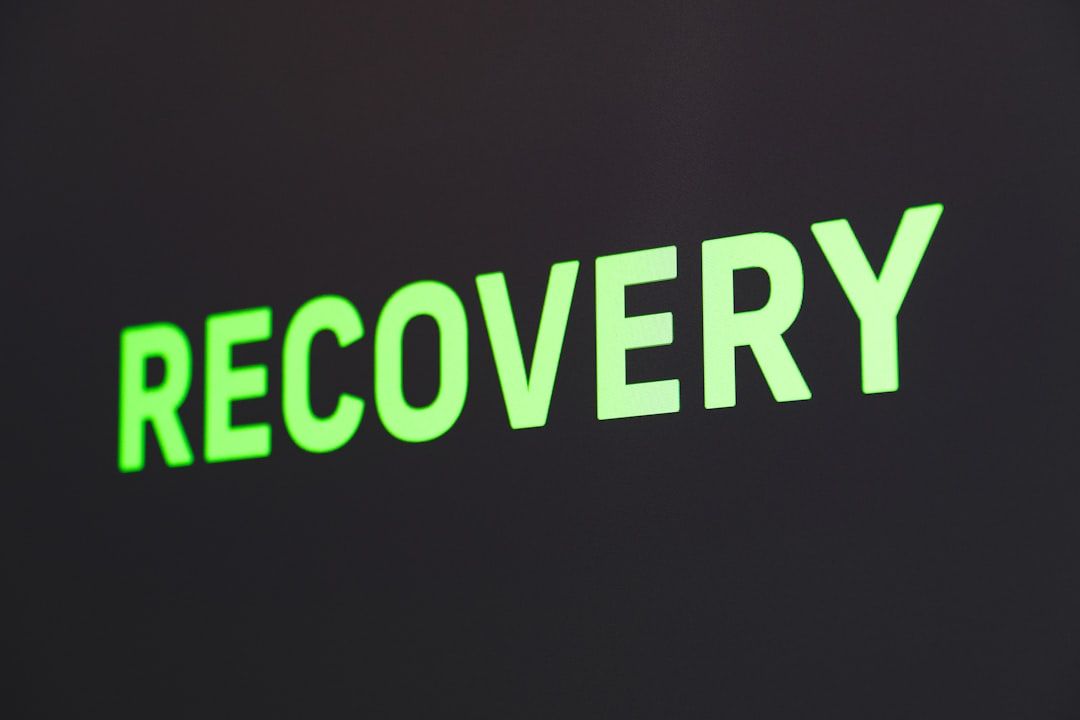IV Therapy to the Rescue – Tackling Altitude Sickness Head-On
Why Colorado's High Altitude Challenges Your Body
Altitude sickness IV therapy provides rapid relief from the debilitating symptoms that can ruin your Colorado mountain trip. Here's what you need to know:
Quick Facts About Altitude Sickness IV Therapy:
- Speed of Relief: Symptoms improve within 30-60 minutes vs. hours for oral remedies
- Absorption Rate: 100% IV absorption vs. ~50% oral absorption
- Treatment Time: 30-45 minutes for a complete session
- Key Benefits: Rapid rehydration, nutrient replenishment, anti-nausea relief
- Best For: Headaches, nausea, fatigue, and dehydration from altitude exposure
Colorado's breathtaking peaks offer incredible trips, from skiing Vail's slopes to hiking trails near Boulder. But a hidden challenge awaits many visitors: altitude sickness. Roughly 25% of all visitors sleeping at altitudes above 8,000 feet wake up with a pounding headache, nausea, and crushing fatigue.
The culprit is your body struggling to adapt to Colorado's thin mountain air, where oxygen levels can be 30% lower than at sea level. This leads to a cascade of unpleasant symptoms that can quickly derail your carefully planned vacation.
The good news is that altitude sickness IV therapy offers a fast, effective solution. Unlike oral remedies that must fight through an already queasy stomach, IV therapy delivers hydration and essential nutrients directly into your bloodstream for immediate relief.
I'm Travis Sugg, founder of Biomed Mobile IV & Wellness. With over a decade of experience as a paramedic and licensed IV therapy provider, I've seen how altitude sickness IV therapy can transform a miserable mountain experience. My team and I bring professional, personalized care directly to your hotel, vacation rental, or home throughout the Denver metro area.

Understanding Altitude Sickness: Why You Feel Bad at High Elevations
Altitude sickness, or Acute Mountain Sickness (AMS), occurs when your body struggles to adjust to the lower oxygen and reduced air pressure at higher elevations. It's a common issue for travelers in Colorado's mountains, especially those arriving from sea level. Your body is adaptable, but a rapid ascent doesn't provide enough time to acclimate. You can learn more in our guide on Understanding Altitude Sickness.
The primary cause is hypoxia—an insufficient oxygen supply. At 10,000 feet, you're getting about 31% less oxygen than at sea level, forcing your body to work harder and leading to symptoms. For a deeper dive, the Cleveland Clinic explains altitude sickness in detail.
Common Symptoms of Mild to Moderate Altitude Sickness
Symptoms typically appear 8-36 hours after ascent and often feel like a bad hangover. They include:
- Headache: Often the first and most common symptom, ranging from mild to severe.
- Nausea and Vomiting: An upset stomach and loss of appetite make it difficult to stay hydrated orally.
- Dizziness or Lightheadedness: Feeling unsteady or faint is a frequent complaint.
- Fatigue and Weakness: A deep exhaustion that makes any physical activity feel overwhelming.
- Difficulty Sleeping (Insomnia): It's common to feel exhausted but unable to get restful sleep.
- Rapid Heartbeat and Shortness of Breath: Your body works overtime to compensate for lower oxygen.
Dehydration significantly worsens these symptoms due to the dry mountain air. Learn more about its importance on our Dehydration page.
When It's an Emergency: Signs of Severe Altitude Sickness (HAPE & HACE)
While most cases are mild, severe altitude sickness is a life-threatening emergency requiring immediate medical attention and descent. Be aware of two severe forms:
- High-Altitude Pulmonary Edema (HAPE): Fluid buildup in the lungs. Signs include extreme shortness of breath at rest, a persistent cough (sometimes with pink, frothy sputum), gurgling sounds in the chest, and blue lips or fingernails (cyanosis).
- High-Altitude Cerebral Edema (HACE): Swelling of the brain. Signs include a worsening headache unresponsive to medication, confusion, loss of coordination (ataxia), and altered mental status.
If you or someone in your group shows these signs, descend immediately and seek emergency medical care. While our IV therapy is excellent for mild to moderate symptoms, severe cases require hospital-level intervention.
How Altitude Sickness IV Therapy Delivers Rapid Relief
When altitude sickness hits, every minute of your vacation counts. Altitude sickness IV therapy is a game-changer because it works incredibly fast. While oral remedies are difficult to use when you're nauseous and may only offer 50-60% absorption, IV therapy bypasses the digestive system entirely.
This direct-to-bloodstream delivery ensures a 100% absorption rate, meaning every drop of fluid and nutrient goes to work immediately. Our clients often feel better within 30 minutes. Nausea typically subsides in 15-20 minutes, with headache relief following shortly after. This rapid response is due to immediate rehydration and nutrient replenishment, which are critical for recovery at altitude. You can learn more about our targeted formulas on our IV Therapy for Altitude Sickness Symptoms page.
Key Ingredients in an Altitude Sickness IV Drip
Our IV drips are formulated to tackle each symptom while supporting overall recovery. Key components include:
- Saline Solution & Electrolytes: The foundation for rapid rehydration, restoring fluid balance and supporting nerve and muscle function.
- B-Complex Vitamins (including B12): These powerhouse nutrients combat fatigue by helping your cells convert food into usable energy.
- Vitamin C: A powerful antioxidant that protects your cells from the increased oxidative stress of high altitude.
- Magnesium: This essential mineral helps relieve the pounding headaches common with altitude sickness.
- Glutathione: Often called the "master antioxidant," it aids in detoxification and reduces inflammation at a cellular level.
- Optional Medications: For severe symptoms, we can add anti-nausea medication (like Zofran) or anti-inflammatory pain relief (like Toradol) for targeted, fast-acting relief.
For more general information on IV nutrient therapy, WebMD provides additional insights into how these treatments work.
The Science Behind Fast-Acting IV Therapy for Altitude Sickness
IV therapy works faster than oral remedies because of basic physiology. When you're nauseous from altitude sickness, your digestive system is compromised. Oral supplements must survive stomach acid and be absorbed by the gut, a process that takes hours and is highly inefficient.
IV therapy eliminates these barriers. The 100% absorption rate means the ingredients get to work instantly. The saline solution expands blood volume, improving circulation and oxygen delivery. The kidneys, now properly hydrated, can efficiently flush out metabolic waste that contributes to feeling ill. Simultaneously, antioxidants like Vitamin C and glutathione combat cellular inflammation, while B vitamins support energy production. This comprehensive, immediate approach is why you feel better so quickly. Learn more about our specific protocols on our IV for Altitude Sickness page.
IV Therapy vs. Traditional Remedies: Making the Right Choice
When altitude sickness strikes, your choice of treatment can make or break your trip. Altitude sickness IV therapy offers compelling advantages over traditional methods, getting you back to your vacation much faster.
IV therapy provides relief in as little as 30 minutes with 100% absorption, while oral remedies can take 1-4 hours and only achieve 50-60% absorption —assuming you can keep them down. When nausea is a factor, IV therapy is the clear winner. We can include anti-nausea medications that work in minutes, bypassing a compromised digestive system entirely.
Convenience is another major factor. When you feel miserable, the last thing you want is to find a pharmacy. Our mobile IV service brings professional care directly to you. Whether you're in a hotel in Denver, a rental in Boulder, or a home anywhere across the Colorado Front Range—including Aurora, Castle Rock, Fort Collins, Greeley, and Loveland—we come to you. You can learn more about this on our What is Mobile IV Therapy? page.
When to Consider IV Therapy for Altitude Sickness
Timing is key for getting the most out of IV therapy. Consider treatment in these scenarios:
- As a Preventative Step: If you have a history of altitude sickness, an IV upon arrival can optimize hydration and nutrient levels to reduce symptom severity.
- When Symptoms First Appear: Don't wait for symptoms to worsen. Early treatment with IV therapy can quickly address headache, nausea, and fatigue.
- When Oral Hydration Fails: If you're drinking water but still feel dehydrated or can't keep fluids down, IV therapy is essential.
- For Rapid Recovery: If you have plans you can't miss, IV therapy offers the fastest way to get back on your feet.
Traditional Altitude Sickness Support Strategies
While IV therapy provides rapid treatment, traditional strategies are the foundation of prevention and safety. The best approach often combines both.
Gradual ascent is the gold standard for prevention, giving your body time to adapt. Once above 8,000 feet, try not to increase your sleeping elevation by more than 1,600 feet per day. Other key strategies include resting for the first 24-48 hours, maintaining oral hydration with electrolytes, eating a high-carbohydrate diet, and limiting alcohol. Over-the-counter pain relievers like ibuprofen can help with mild headaches. The CDC offers comprehensive guidance on altitude illness that covers these traditional approaches.
Beyond the Drip: Prevention and Safety for Your Colorado Trip
At Biomed Mobile IV & Wellness, we combine rapid altitude sickness IV therapy with education on prevention for a complete approach to your high-altitude wellness. Our commitment is to your overall safety and well-being. Every team member is a licensed medical professional, including registered nurses and paramedics like our founder Travis Sugg, who brings over a decade of emergency medical experience.
We bring this expert care wherever you are in the Colorado Front Range via our Mobile IV Therapy Services. Before any treatment, we conduct a thorough health assessment, as certain conditions like uncontrolled congestive heart failure or kidney disease may require special consideration. Your safety is our top priority.
Top Prevention Strategies for Altitude Sickness
The best way to handle altitude sickness is to avoid it. Smart prevention can keep you feeling great from the start.
- Ascend Slowly: If possible, spend a night in Denver (5,280 feet) before heading higher. Above 8,000 feet, limit sleeping elevation increases to about 1,500 feet per night.
- "Climb High, Sleep Low": A classic mountaineering principle. Hike or ski at higher elevations during the day, but return to a lower altitude to sleep.
- Hydrate with Electrolytes: The dry air and increased breathing at altitude accelerate fluid loss. Aim for 3-4 liters of water daily and include electrolytes. Research shows how crucial fluid balance is at altitude.
- Eat a High-Carbohydrate Diet: Carbs require less oxygen to metabolize, making them an efficient fuel source.
- Limit Alcohol and Caffeine: Both can contribute to dehydration and worsen symptoms, especially in the first 24-48 hours.
- Get Adequate Rest: Avoid strenuous activity on your first day to let your body adapt.
Is Altitude Sickness IV Therapy Safe?
Yes, when administered by qualified professionals, altitude sickness IV therapy is very safe. At Biomed Mobile IV & Wellness, your safety is paramount.
Our team consists of experienced, licensed medical professionals(nurses and paramedics) who follow strict protocols. We use only sterile, single-use equipment for every treatment. A review of your health history is a crucial safety step to ensure IV therapy is appropriate for you. Most people experience only minor side effects, like slight bruising at the injection site. We are trained to identify potential contraindications and will always prioritize your well-being. Choosing a reputable provider like Biomed Mobile IV & Wellness for IV Therapy in Colorado ensures you receive professional, safe, and effective care.
Frequently Asked Questions about Altitude Sickness IV Therapy
It's natural to have questions about altitude sickness IV therapy. Here are answers to the most common ones we receive.
How long does an altitude sickness IV treatment take?
Most altitude sickness IV therapy sessions take between 30 to 60 minutes. The exact duration depends on the specific IV formula you choose and your personal tolerance. Our medical team prioritizes your comfort and will adjust the infusion rate to ensure a relaxing and effective experience.
Can I get an IV drip to prevent altitude sickness before my trip?
Yes, preventative IV therapy is a popular and smart choice, especially for those flying into Denver and heading directly to the mountains. While it's not a substitute for proper acclimatization, an IV drip optimizes your hydration and boosts nutrient levels before you even feel symptoms. This gives your body a significant advantage and can reduce the risk and severity of altitude sickness, helping you feel better from the start.
What does an altitude sickness IV feel like?
Most people are pleasantly surprised by how comfortable the process is. You'll feel a brief pinch from the IV insertion, which lasts only a second. After that, the experience is quite relaxing. You might notice a cool sensation as the fluids enter your bloodstream, which many find refreshing. The most remarkable part is the rapid symptom improvement. Nausea often eases within 15-20 minutes, with headache relief following soon after, allowing you to feel like yourself again by the end of the session.
Conclusion: Get Back to the Peaks with Rapid IV Relief
Don't let altitude sickness steal a moment of your Colorado trip. Altitude sickness IV therapy is the fastest, most effective way to combat symptoms, delivering hydration and nutrients directly into your bloodstream for 100% absorption and relief in as little as 30 minutes.
This treatment gives your body the tools it needs to adapt and thrive in Colorado's thin mountain air. At Biomed Mobile IV & Wellness, we make this powerful solution convenient. Our team of licensed nurses and paramedics, led by founder Travis Sugg, brings professional medical care to your hotel, rental, or home.
We serve the entire Colorado Front Range, from Aurora and Castle Rock to Fort Collins and Greeley, ensuring relief is just a phone call away. Your Colorado experience should be about creating memories, not battling headaches and nausea.
Ready to conquer the peaks and enjoy your time in beautiful Colorado? Book your IV for Altitude Sickness now and get back to the trip you came here for.





